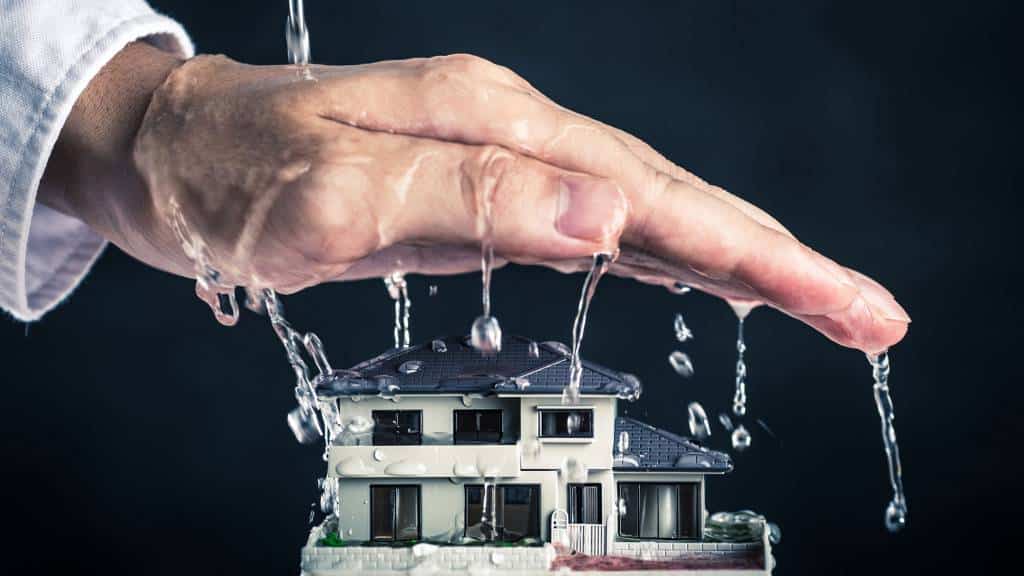Identify Half a Dozen the Most Reasons for Leak Issues in Your Home
Identify Half a Dozen the Most Reasons for Leak Issues in Your Home
Blog Article
We have encountered this great article pertaining to How Fast Water Damage Can Ruin Your Home directly below on the net and thought it made perfect sense to talk about it with you on this site.

Leakages not just cause waste of water but can additionally trigger unnecessary damage to your home and promote undesirable organic development. Water leaks could go unnoticed considering that most of the pipework in our house is concealed. By looking and understanding for daily scenarios that create leaks, you can protect your home from future leakages and also unnecessary damages. Today, we will certainly take a look at 6 leakage causes that might be triggering your pipelines to drip.
Elbowing in roots
Most water leaks start outside your home instead of inside it. If you notice an abrupt decrease in water stress, claim in your faucet, take some time to head out and examine your yard. You may discover wet patches or sinkholes in your backyard, and that may mean that tree origins are getting into water lines triggering water to leak out. You can have your plumber look for intrusion, specifically if you have trees or bushes near your residential property.
Corroded water systems
As time passes by, your plumbing system ages and also rust such as corrosion may begin eating away the pipelines. This may be the cause of staining or warping on your pipes. This asks for an examination with your plumber promptly. Consider replacing the pipelines since they are at a greater risk of corrosion than the newer versions if our plumbing system is old.
Faulty Pipe Joints
Pipeline joints can wear away over time, resulting in water leaks. If you have noisy pipelines that make ticking or banging noises, specifically when the warm water is turned on, your pipe joints are most likely under a whole lot of stress.
Immediate temperature changes.
Severe temperature changes in our pipes can trigger them to broaden and contract unexpectedly. This growth as well as tightening might create cracks in the pipelines, specifically if the temperature level are below freezing. It would be best if you kept an eye on just how your plumbing works. The existence of the formerly pointed out conditions regularly indicates a high risk.
Poor Water Connectors
At times, a leakage can be caused by loose hoses and pipes that provide your appliances. In case of a water connections leakage, you may discover water running directly from the supply line or puddles around your home appliances.
Clogged Drains
Obstructed drains pipes may be irritating and inconveniencing, however they can sometimes end up creating an overflow bring about rupture pipes. Keep getting rid of any kind of products that may go down your drains pipes that could clog them to stay clear of such inconveniences.
All the above are reasons for leakages however not all water leaks result from plumbing leakages; some leaks might come from roof leaks. All leakages need to be repaired quickly to stay clear of water damages.
Leaks not only create waste of water yet can additionally cause unnecessary damage to your house and advertise undesirable organic growth. By looking and recognizing for daily circumstances that create leakages, you can secure your home from future leaks as well as unneeded damages. Today, we will look at six leak triggers that may be triggering your pipes to leak.
At times, a leak can be triggered by loose hoses as well as pipes that supply your appliances. In situation of a water connections leakage, you might discover water running directly from the supply line or pools around your appliances.
How To Check For Water Leak In Your Home
How To Check for Leaks
The average household's leaks can account for nearly 10,000 gallons of water wasted every year and ten percent of homes have leaks that waste 90 gallons or more per day. Common types of leaks found in the home are worn toilet flappers, dripping faucets, and other leaking valves. These types of leaks are often easy to fix, requiring only a few tools and hardware that can pay for themselves in water savings. Fixing easily corrected household water leaks can save homeowners about 10 percent on their water bills.
To check for leaks in your home, you first need to determine whether you're wasting water and then identify the source of the leak. Here are some tips for finding leaks:
Take a look at your water usage during a colder month, such as January or February. If a family of four exceeds 12,000 gallons per month, there are serious leaks.
Check your water meter before and after a two-hour period when no water is being used. If the meter changes at all, you probably have a leak.
Identify toilet leaks by placing a drop of food coloring in the toilet tank. If any color shows up in the bowl after 10 minutes, you have a leak. (Be sure to flush immediately after the experiment to avoid staining the tank.)
Examine faucet gaskets and pipe fittings for any water on the outside of the pipe to check for surface leaks.
Undetected water leaks can happen without the home or business owner even realizing. If you suspect a water leak, but not able to find the source. It is time to contact a professional water leak detection service, The Leak Doctor.
How To Find a Water Leak In Your Home
https://www.leakdoctor.com/blog/How-To-Check-For-Water-Leak-In-Your-Home_AE197.html

I came across that blog entry on Common Water Leaks In House while doing a search on the web. Those who liked our blog post if you please make sure you remember to share it. Thank you for your time. Kindly check up our site back soon.
24/7 emergency plumbing? Reach out. Report this page